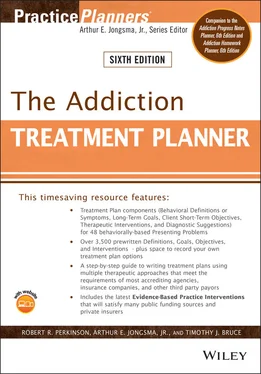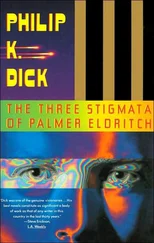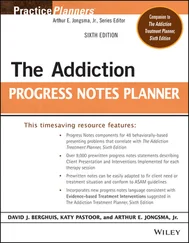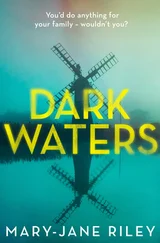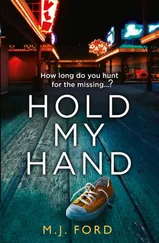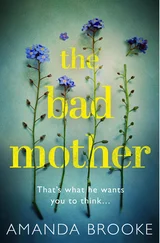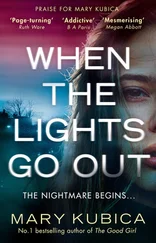The Addiction Treatment Planner
Здесь есть возможность читать онлайн «The Addiction Treatment Planner» — ознакомительный отрывок электронной книги совершенно бесплатно, а после прочтения отрывка купить полную версию. В некоторых случаях можно слушать аудио, скачать через торрент в формате fb2 и присутствует краткое содержание. Жанр: unrecognised, на английском языке. Описание произведения, (предисловие) а так же отзывы посетителей доступны на портале библиотеки ЛибКат.
- Название:The Addiction Treatment Planner
- Автор:
- Жанр:
- Год:неизвестен
- ISBN:нет данных
- Рейтинг книги:4 / 5. Голосов: 1
-
Избранное:Добавить в избранное
- Отзывы:
-
Ваша оценка:
- 80
- 1
- 2
- 3
- 4
- 5
The Addiction Treatment Planner: краткое содержание, описание и аннотация
Предлагаем к чтению аннотацию, описание, краткое содержание или предисловие (зависит от того, что написал сам автор книги «The Addiction Treatment Planner»). Если вы не нашли необходимую информацию о книге — напишите в комментариях, мы постараемся отыскать её.
The Addiction Treatment Planner, Sixth Edition
The Additction Treatment Planner, Sixth Edition
The Addiction Treatment Planner — читать онлайн ознакомительный отрывок
Ниже представлен текст книги, разбитый по страницам. Система сохранения места последней прочитанной страницы, позволяет с удобством читать онлайн бесплатно книгу «The Addiction Treatment Planner», без необходимости каждый раз заново искать на чём Вы остановились. Поставьте закладку, и сможете в любой момент перейти на страницу, на которой закончили чтение.
Интервал:
Закладка:
This sixth edition of The Addition Treatment Planner has been improved in many ways:
Updated with new and revised evidence-based objectives and interventions
Addition at the outset of every chapter of an evidence-based Objective and two Therapeutic Interventions highlighting the importance of establishing a positive relationship with the client
Revised, expanded, and updated References to Empirical Support for Evidence-based Chapters (Appendix G) are now listed online at www.wiley.com/go/jongsma/addictiontp6e
Revised, expanded, and updated self-help book list in the Bibliotherapy Suggestions ( Appendix A)
More suggested homework assignments from Homework Planners integrated into the interventions
Updated Appendix F, which provides an Alphabetical Index of Sources for the Assessment Instruments and Clinical Interview Forms Cited in Interventions
New chapters on Opioid Use and Panic Disorder/Agoraphobia
Renamed chapters for Depression – Unipolar (formerly Unipolar Depression) and Readiness for Change (formerly Treatment Resistance)
Exclusive use of DSM-5 (ICD-10-CM) diagnostic labels and codes into the Diagnostic Suggestions section of each chapter
This edition of the Planner continues to give special attention to the Patient Placement Criteria (PPC) developed by the American Society of Addiction Medicine (ASAM). In the ASAM contents we have listed our presenting problem chapters under each of the six assessment dimensions:
1 Dimension 1: Acute intoxication and/or withdrawal potential
2 Dimension 2: Biomedical conditions and complications
3 Dimension 3: Emotional, behavioral, or cognitive conditions and complications
4 Dimension 4: Readiness to change
5 Dimension 5: Relapse, continued use, or continued problem potential
6 Dimension 6: Recovery/living environment
The Addiction Treatment Planner has treatment planning content applicable to problems discovered in all of the six assessment dimensions.
Also included ( Appendix D) is a form that can be used to assess the client under the six ASAM dimensions. The checklist provides material for efficient evaluation of the client on each of the six dimensions. This form has been developed and is utilized by the staff at Keystone Treatment Center, Canton, South Dakota, where Dr. Perkinson is the clinical director. It is not copyrighted and may be used or adapted for use by our readers.
Interventions can be found in each chapter that reflect a 12-step recovery program approach, but you will also find interventions based on a broader psychological and pharmacological model. Because addiction treatment is often done in a residential setting through a team approach, interventions have been created that can be assigned to staff members of various disciplines and modalities: nursing, medical, group counseling, family therapy, or individual therapy. We hope that we have provided a broad, eclectic menu of objectives and interventions from which you can select to meet your client's unique needs. Ideally, we have also provided a stimulus for you to create new objectives and interventions from your own clinical experience that have proven to be helpful to addictive clients.
Evidence-based practice (EBP) is steadily becoming the standard of care in mental health care as it has in medical health care. Professional organizations such as the American Psychological Association (APA), National Association of Social Workers, and the American Psychiatric Association, as well as consumer organizations such the National Alliance for the Mentally Ill (NAMI) have all endorsed the use of EBP. In some practice settings, EBP is becoming mandated. Some third-party payers are requiring use of EBP for reimbursement. It is clear that the call for evidence and accountability is being increasingly sounded. So, what is EBP and how is its use facilitated by this Planner ?
Borrowing from the Institute of Medicine's definition (Institute of Medicine, 2001), the APA has defined EBP as, “the integration of the best available research with clinical expertise in the context of patient characteristics, culture, and preferences” (APA Presidential Task Force on EBP, 2006). Consistent with this definition, we have identified those psychological treatments with the best available supporting evidence, added Objectives and Interventions consistent with them in the pertinent chapters, and identified these with this symbol:  . As most practitioners know, research has shown that although these treatment methods may have demonstrated efficacy, factors such as the individual psychologist (e.g. Wampold, 2001), the treatment relationship (e.g. Norcross, 2019), and the patient (e.g. Bohart & Tallman, 1999) are also vital contributors to optimizing a client's response to psychotherapy. As noted by the APA, “Comprehensive evidence-based practice will consider all of these determinants and their optimal combinations.” (APA, 2006, p. 275). For more information and instruction on constructing evidence-based psychotherapy treatment plans, see our 12 DVD-based training videos entitled Evidence-based Psychotherapy Treatment Planning (Jongsma & Bruce, 2010–2012).
. As most practitioners know, research has shown that although these treatment methods may have demonstrated efficacy, factors such as the individual psychologist (e.g. Wampold, 2001), the treatment relationship (e.g. Norcross, 2019), and the patient (e.g. Bohart & Tallman, 1999) are also vital contributors to optimizing a client's response to psychotherapy. As noted by the APA, “Comprehensive evidence-based practice will consider all of these determinants and their optimal combinations.” (APA, 2006, p. 275). For more information and instruction on constructing evidence-based psychotherapy treatment plans, see our 12 DVD-based training videos entitled Evidence-based Psychotherapy Treatment Planning (Jongsma & Bruce, 2010–2012).
The sources we used to identify the evidence-based treatments integrated into this Planner are multiple and, we believe, high quality. They include rigorous meta-analyses, current critical, expert reviews, as well as EBP guideline recommendations. Examples of specific sources include the Cochrane Collaboration reviews; the work of the Society of Clinical Psychology identifying research-supported psychological treatments; evidence-based treatment reviews (e.g. David, Lynn, & Montgomery, 2018; Nathan & Gorman, 2015), as well as critical analyses of the process through which EBP is defined (e.g. Dimidjian, 2019; Norcross, Hogan, Koocher, & Maggio, 2017). EBP guidelines informing the selection process include those from the APA, American Psychiatric Association, the National Institute for Health and Clinical Excellence (NICE) in the United Kingdom, and the National Institute on Drug Abuse (NIDA) to name a few.
Although sources may vary slightly in the criteria they use for judging levels of empirical support, we favored those that use more rigorous criteria, typically requiring demonstration of efficacy through randomized controlled trials or clinical replication series, good experimental methodology, and independent replication. Our approach was to evaluate these various sources and include those treatments supported by the highest level of evidence and for which there was consensus across most of these sources. For any chapter in which EBP is indicated, references to the sources used to identify them can be found online at www.wiley.com/go/jongsma/addictiontp6e. In addition to these references to empirical support, we have also included a Professional Reference appendix listing references to Clinical Resources. Clinical Resources are books, manuals, and other resources for clinicians that describe the details of the application, or the “how to,” of the treatment approaches described in a chapter.
We recognize that there is debate regarding EBP among mental health professionals, who are not always in agreement regarding the best treatment, what factors contribute to good outcomes, or even what constitutes “evidence.” We also recognize that some practitioners are skeptical about changing their practice based on psychotherapy research. Our intent in this book is to accommodate these differences by providing a range of treatment plan options, including those consistent with the “best available research” (APA, 2006), those reflecting common clinical practices of experienced clinicians (that may have not been subjected to study), and some that reflect promising emerging approaches. Our intent is to allow users of this planner an array of options so that they can construct what they believe to be the best plan for their particular client.
Читать дальшеИнтервал:
Закладка:
Похожие книги на «The Addiction Treatment Planner»
Представляем Вашему вниманию похожие книги на «The Addiction Treatment Planner» списком для выбора. Мы отобрали схожую по названию и смыслу литературу в надежде предоставить читателям больше вариантов отыскать новые, интересные, ещё непрочитанные произведения.
Обсуждение, отзывы о книге «The Addiction Treatment Planner» и просто собственные мнения читателей. Оставьте ваши комментарии, напишите, что Вы думаете о произведении, его смысле или главных героях. Укажите что конкретно понравилось, а что нет, и почему Вы так считаете.
